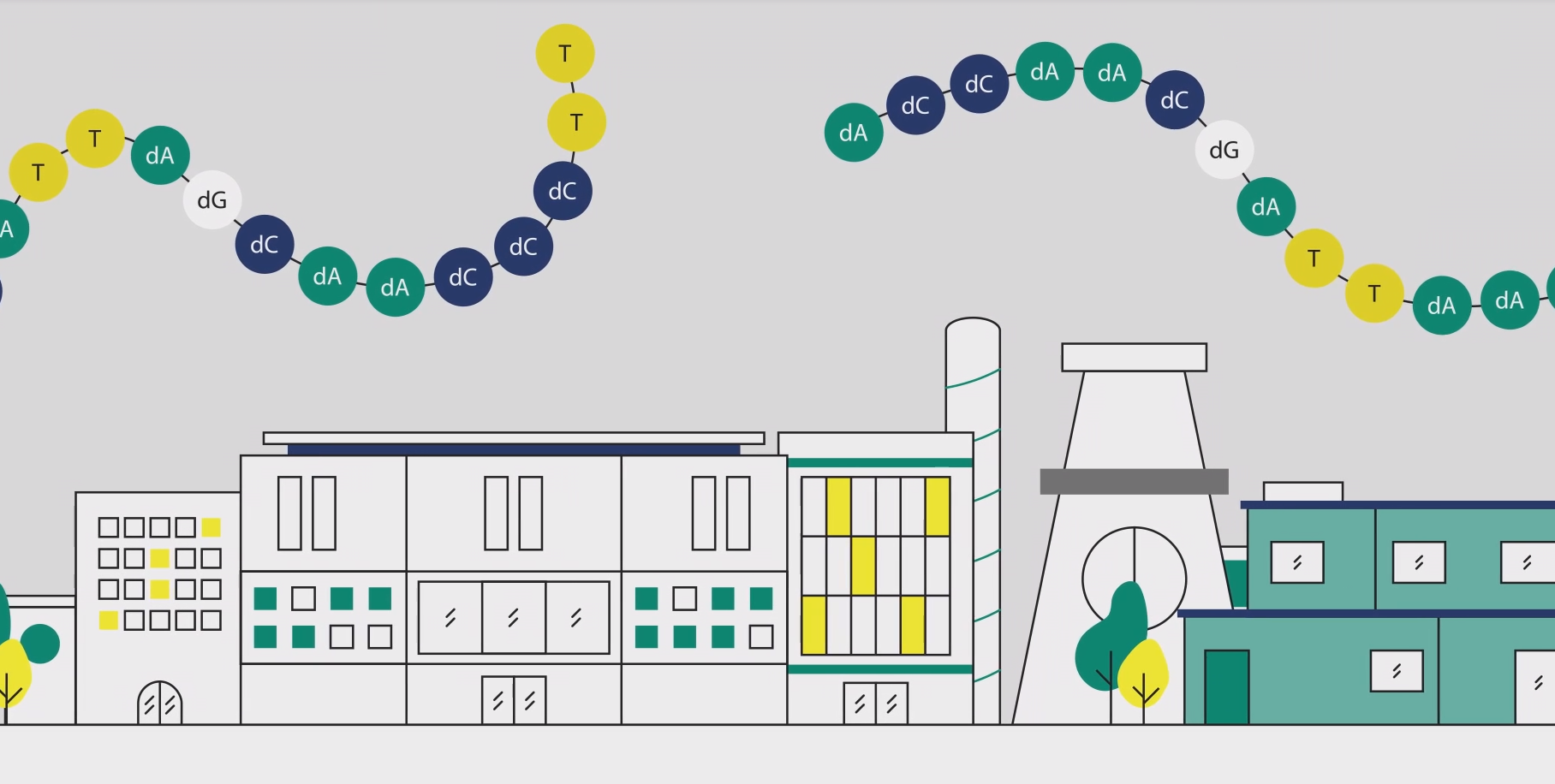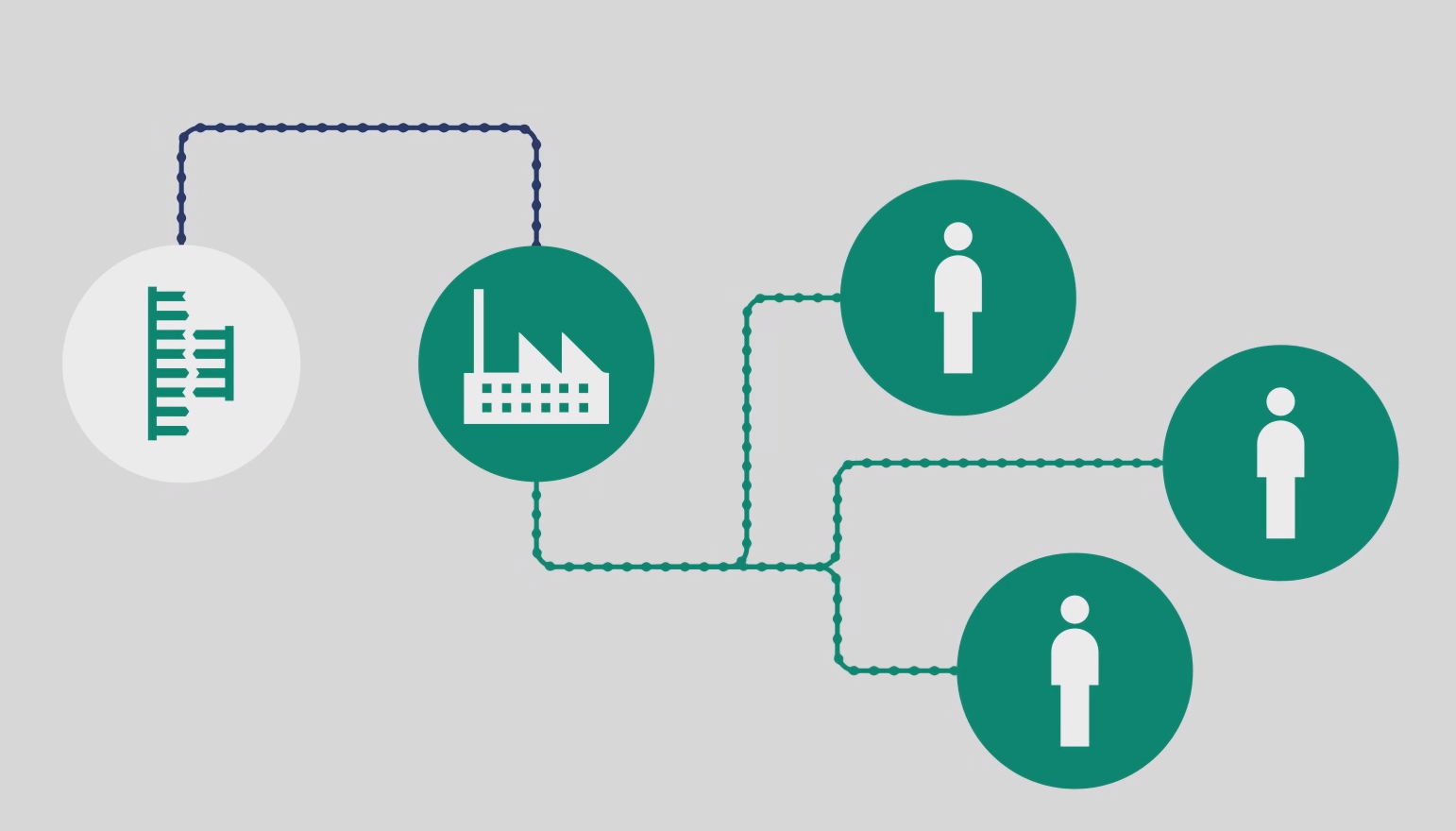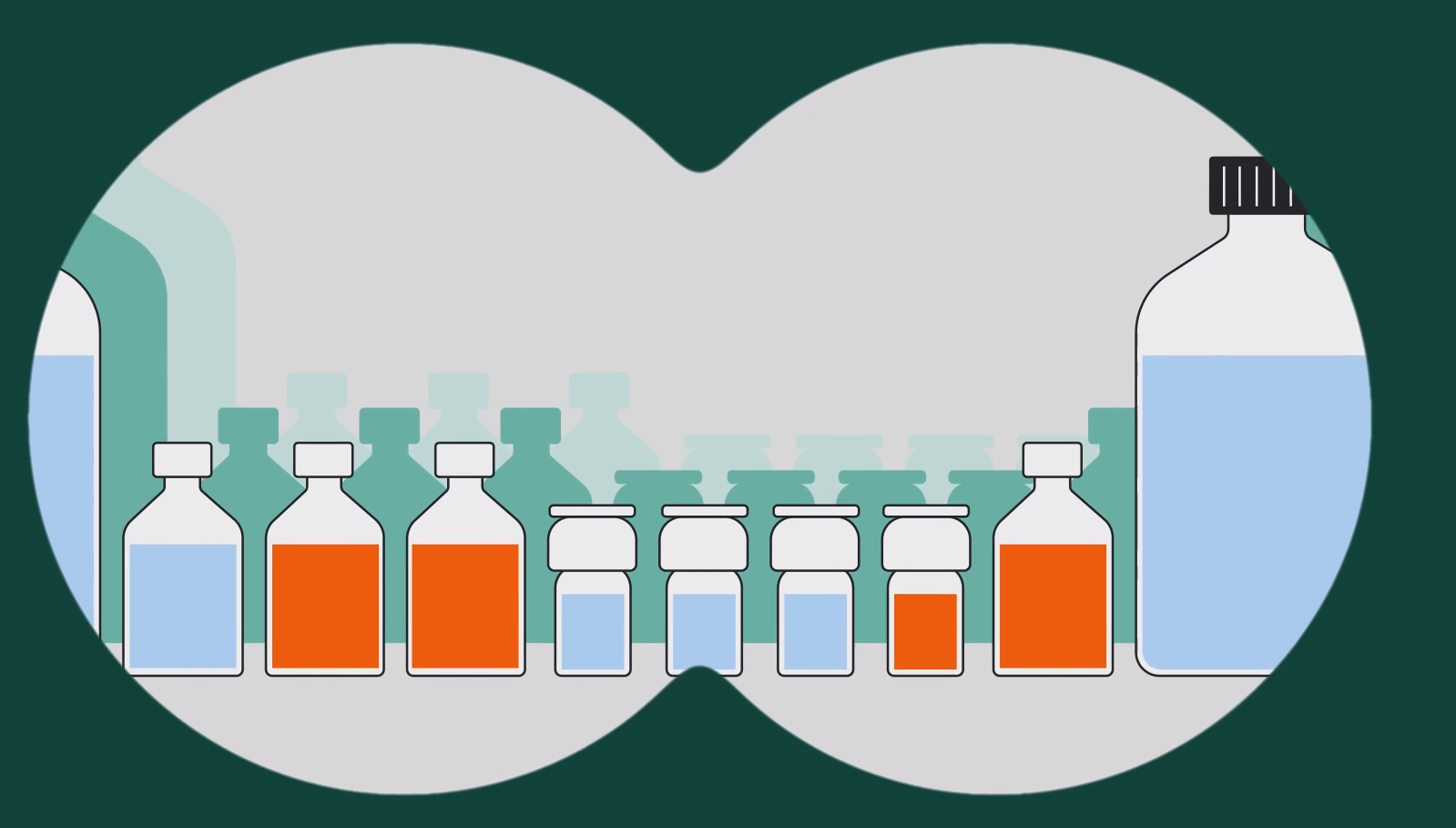Oligonucleotide (or oligo) therapeutics are synthetic strands of DNA or RNA that bind specifically to a target gene or protein sequence. Because of their high specificity, oligonucleotides, which include ASOs based on DNA, small interfering RNAs (siRNAs), and other oligonucleotide variants, show promise for treating cancers, genetic diseases, and other conditions. They’re also used in applications such as CRISPR-mediated gene editing.
Whether you’re just getting started with oligos or have been working with them for some time, you know the promise these molecules have. So how do you make the most of this potential? You make good choices that have huge impacts. These impacts include speed to market, regulatory acceptance, manufacturing costs, and achieving process sustainability at large scale.
Explore 5 keys to success for oligo synthesis, scale up, and manufacturing below.
1. Reasons to insource
One of the biggest decisions in the development of oligo therapeutics is whether to take your process in-house from a contract development and manufacturing organization (CDMO).
Insourcing enables you to maintain control, build in-house experience, save money on process development, and you keep the CDMO spend in your own organization. Having the process in-house also helps make tech transfer smoother. To do all this, you’ll need a team that can synthesize oligonucleotides, has expertise in chromatography and purification, and strong analytical methods (such as LC-MS).
By outsourcing, you can take advantage of CDMOs’ existing facilities and gain efficiency—but you can lose some control of your process as CDMOs often claim intellectual property (IP) ownership of process development, leaving customers without full knowledge of their exact methods. This external IP ownership can make it difficult to change CDMOs later in the process or to bring a process in-house.
Perhaps you previously outsourced development and now want to move to insourcing. Or maybe you’re thinking about outsourcing at the beginning of development but will move it in-house later. How can you make the transition as smooth as possible? One of the best ways is to own your own methods and establish them by contract, so that you have them for the future. Having your own methods also assures that your drug is produced with an optimized process. You should also have detailed scale-up collaboration built into the contract. Obviously, the ideal solution is to use the same system set-up as your CDMO.
Choosing a technology provider that can act as an adviser for your whole process can help you leverage the skills and facilities you already have and find efficient ways to scale up. Keep reading to learn more.
2. Flexibility and scalability
Scaling up is a big milestone in the oligonucleotide therapeutics development timeline. This is the stage where a drug is produced on a large scale for human clinical trials and eventual commercialization. Seamless scale-up is essential for patient safety and for maximizing the potential of a new drug when it goes to market.
Reaching manufacturing scale comes with several considerations. You might need to adjust the size of equipment and vessels, increase the number of batches produced, implement quality control measures, optimize the manufacturing process, and ensure compliance with regulatory guidelines.
A huge advantage of working in house is that you’re the expert in your molecule’s process. Your knowledge can help you save time and resources when scaling up, especially if you’ve planned ahead and have the facility space available.
Being able to tap into a depth of prior knowledge and process experience can really make a difference for your in-house R&D and scale-up. Strong technology providers will do more than just sell equipment—look for a supplier that can understand your specific needs and help advise on flexible solutions. At large scales, solutions may include modular facilities, workflow configuration, and staff training.
Learn more about modular biomanufacturing facilities.
3. Security of supply
Long lead times and unpredictable supply chains lead many companies to build up excess inventory, and this ultimately puts a strain on the company’s budget.
Remember to consider the quantities you will need over time when you scale up your manufacturing volumes. Will your current supplier be able to support you through this step of your process? Would it be more cost-effective to do one or two big batches a year versus smaller ones in a continuous manufacturing process?
Supply chains, raw material quality, and equipment issues can all be obstacles to scaling up. COVID taught the industry the importance of resilience—and a backup source—in your supply chain. This security of supply is essential to maintain the quality of your product. Government strategies increasingly look to in-region-for-region to reduce the risk of a regional impact in a crisis management situation.
Learn how we’re investing in security of supply.
4. Regulatory concerns
At every step—even at research scale—GMP and regulatory considerations should be part of your decision-making processes. Process optimization will save headaches in the later clinical and approval phases.
As your oligonucleotide therapy moves closer to patients, having a robust GMP process is increasingly critical. GMP certification (such as inspections by local authorities) might not always be required, but compliance with GMP principles is crucial.
When tests and trials begin, regulatory considerations include potency and efficacy, stability in vivo, pharmacokinetics, pharmacodynamics, side effects, and safety. Be careful to also look at the differences between how oligonucleotides are classified between the different regulatory agencies. The US Food and Drug Administration (FDA) can regulate the oligonucleotides by both Centre for Biologics Evaluation and Research (CBER) and Centre for Drug Evaluation and Research (CDER), using the following guidelines:
- Synthetic therapeutic oligonucleotides (in theory no potential for incorporation into the chromatin): Regulated by CDER, FDA
- Vector-based or promoter-driven oligonucleotides: Regulated by CBER, FDA (1).
However, the European Medicines Agency (EMA) classifies new drug substances on a case-by-case basis (2). You will need to take these different regulations into account when you test your drug.
5. Sustainability
Over 16 oligonucleotide therapeutics have been approved, and hundreds more are in clinical trials. But biopharma manufacturing doesn’t happen in a vacuum. The processes used for oligonucleotide synthesis create challenges for sustainability. Large volumes of hazardous solvents or reagents may be involved, and synthesis, purification, and isolation are energy-intensive processes. We owe it to patients, investors, and society to find ways to produce these potentially life-saving therapies with minimal harm to the planet.
There are ways to reduce the environmental impact. Acetonitrile, used in synthesis, can be recovered and re-used, or replaced with less hazardous solvents such as acetone. Using continuous diafiltration in the isolation step reduces water consumption by 30% compared to discontinuous diafiltration. Using anion exchange chromatography for purification can also reduce the hazardous waste burden (2).
Batch success rates also affect the sustainability of the manufacturing process. Automation can reduce failure rates and thus decrease waste. Running smaller batches can also reduce waste if things go wrong.
A strong technology provider should be able to support you in meeting your sustainability goals. We’re proud of our sustainability efforts at Cytiva. In 2023, EcoVadis ranked our Swedish site in the top 1% of organizations for sustainability.
If you decide to keep or take your process in house, our nucleic acids therapeutics team can help you answer these questions, in addition to providing the technology and solutions you need to get started.
Learn more about our oligonucleotide manufacturing solutions here.
- TreDenick T. Oligonucleotides: opportunities, pipeline and challenges. BioPharmaceutical Manufacturing & CMC Consulting Services. https://maconraine.com/wpcontent/uploads/2023/04/BioTech_WP_Oglionucleotide_FINAL.pdf. Accessed 15 June 2023.
- Andrews BI et al. Sustainability challenges and opportunities in oligonucleotide manufacturing. J. Org. Chem. 2021;86(1): 49–61.




